I took exactly forty shots of this hawk during takeoff and in flight. Eleven of them made the cut to include here, for reasons both good and not so good.
- Techs for these images are: 1/1600 – 1/2500, f/7.1, ISO 400, Canon 7D Mark II, Canon EF 500mm f/4L IS II USM + EF 1.4 III Extender
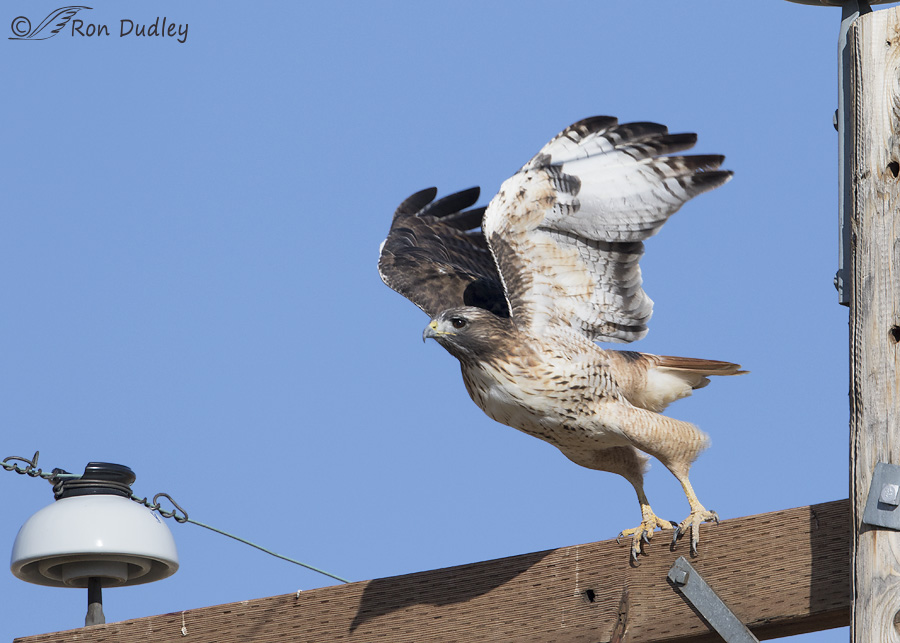
Birds were so darned slow yesterday morning in Tooele County I hadn’t even clicked my shutter after almost three hours of looking for them. But on my way home and just before I got back onto the freeway I decided to give this adult Red-tailed Hawk on a power pole a chance to save my bacon.
My purpose for this series is to illustrate some of the challenges of photographing raptors taking off from power poles. I’ve included some images I like and others where the wires were a problem. Some of these shots could be saved by removing the wires during processing but with a single exception (the last image) I’ve applied no Photoshop magic to any of these photos.
All images are presented in the order they were taken and readers who may be curious can determine how many shots I’ve skipped between images by passing your cursor over the photos and looking at the file numbers.
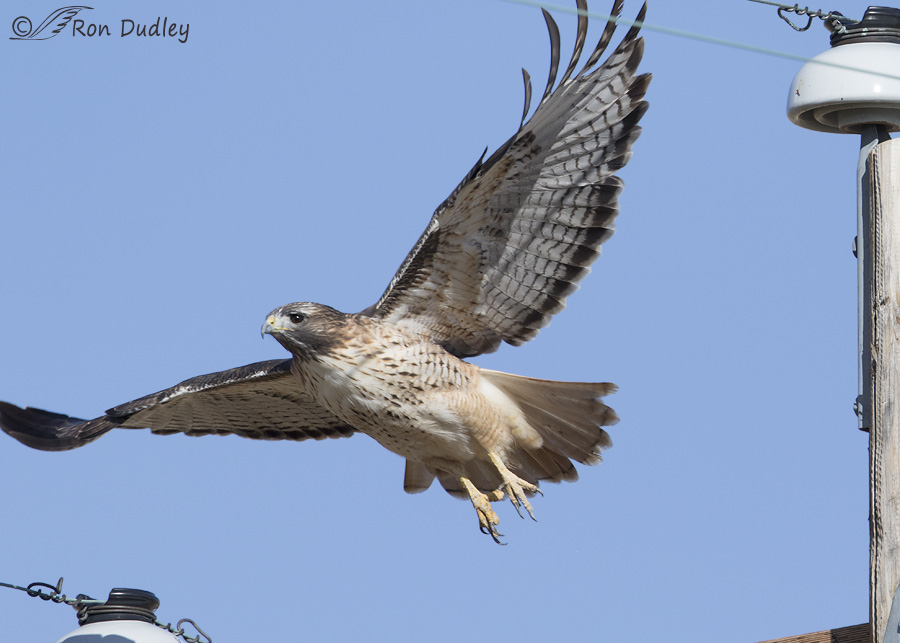
One of the common problems with shooting raptors at the moment of takeoff is underestimating the tremendous wingspan of the bird while it’s perched (I still do it far too often). That challenge is complicated but the fact that the photographer doesn’t know at what angle the bird will launch – up, down, or horizontally. This hawk took off at an upward angle and of course I clipped both wingtips.
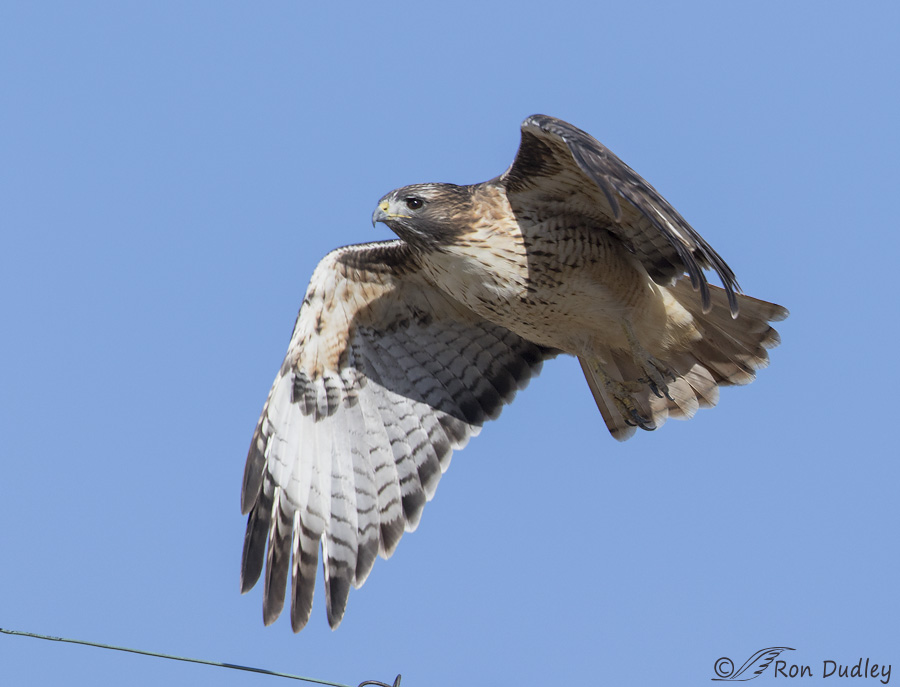
Still going up.
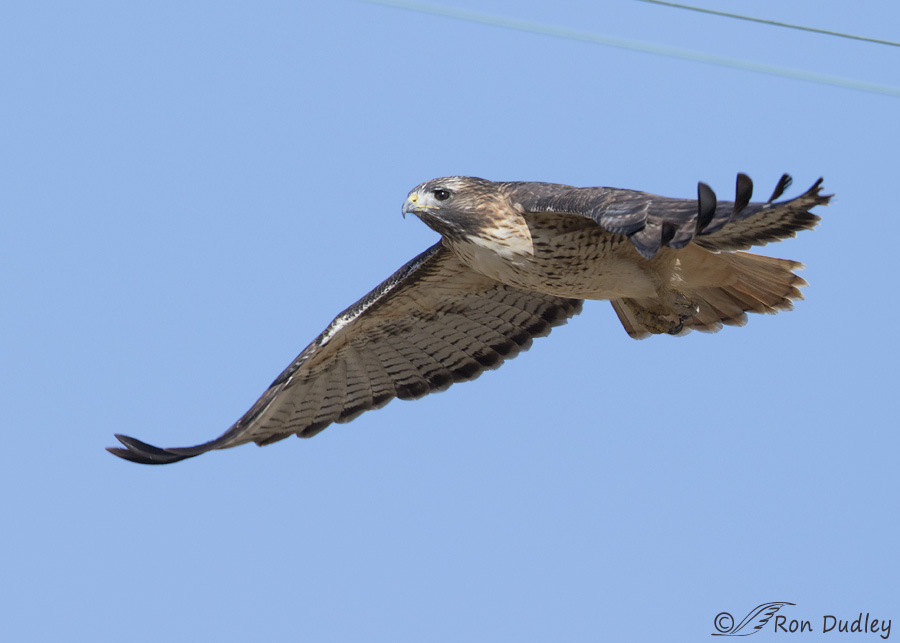
The hawk is now flying between wires that are both above and below it (here we can’t see those below). For those shots where the wings were held largely in a horizontal position…
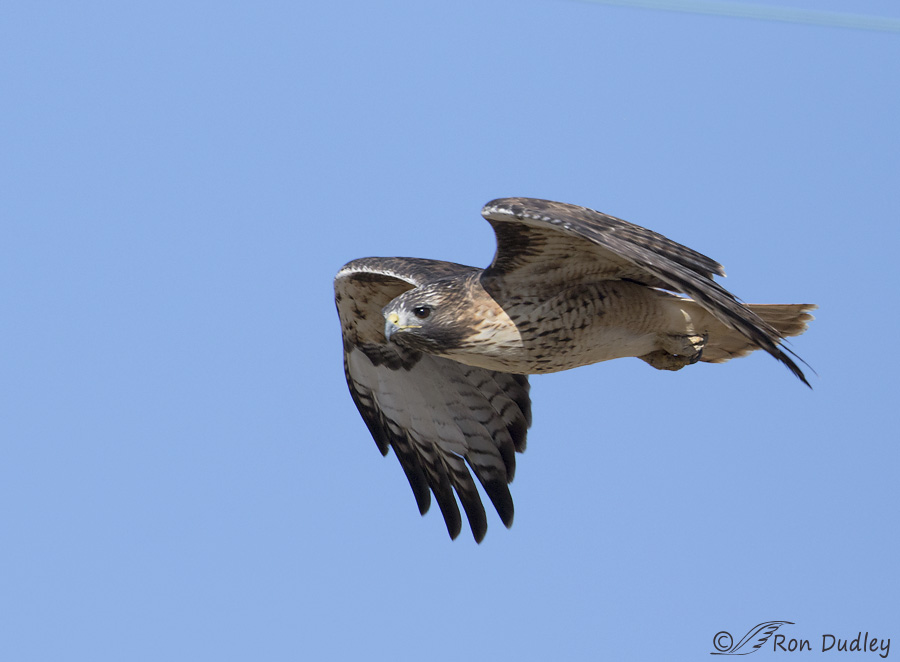
there were no wires in front of the bird.
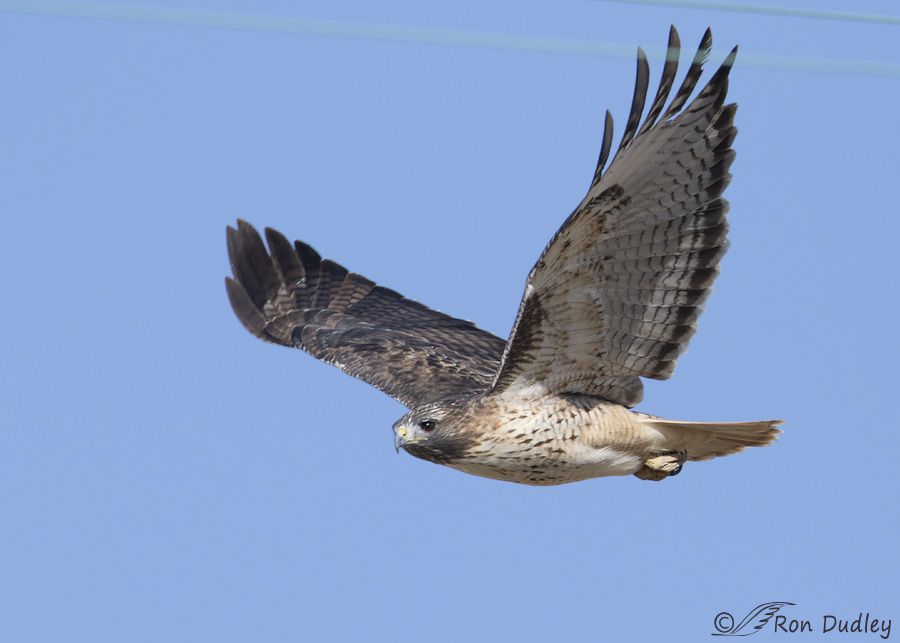
But when it raised its wings the wires became a bigger problem.
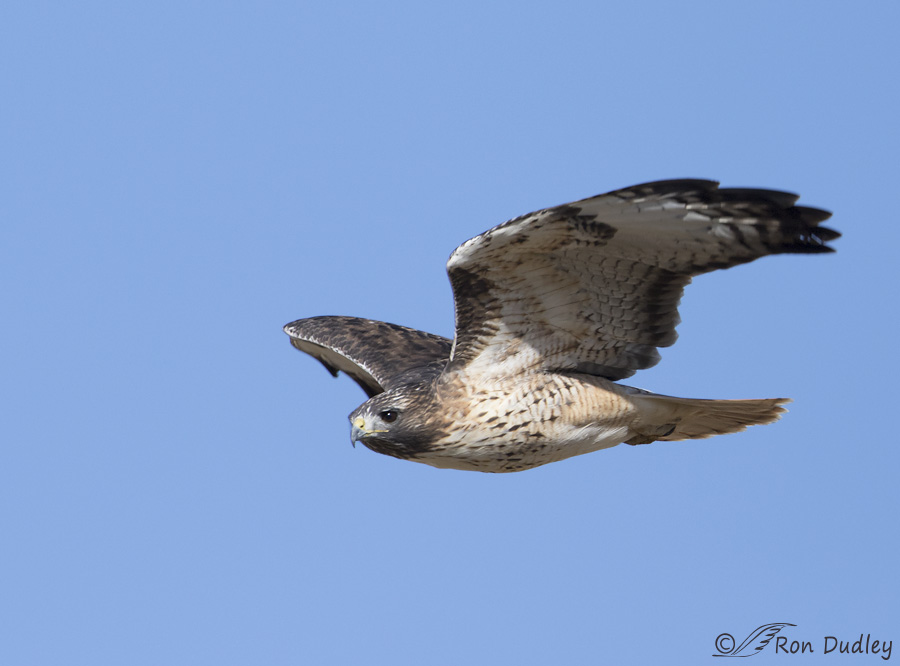
Now the hawk is beginning to descend so…
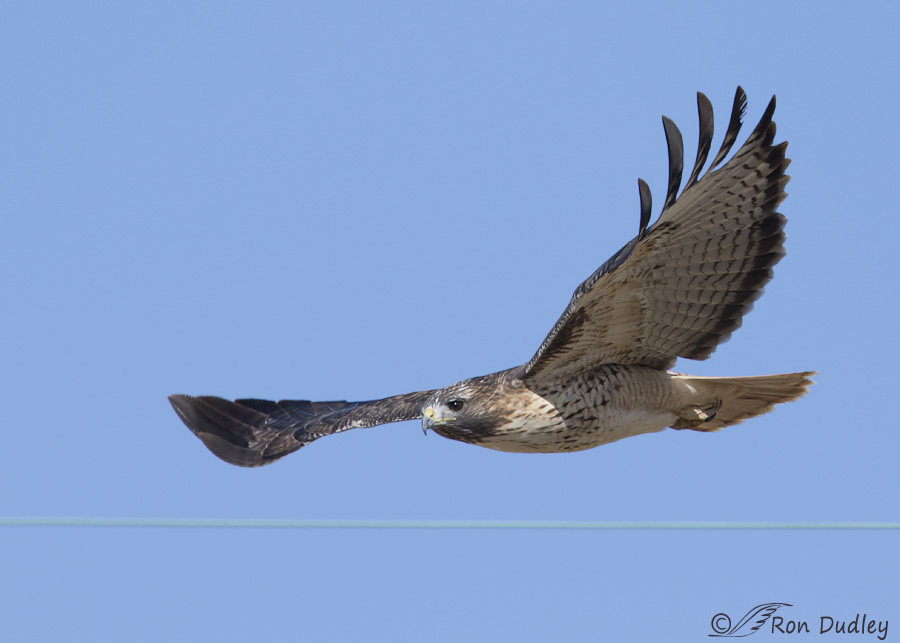
the wire below it began to factor in. Between this image…
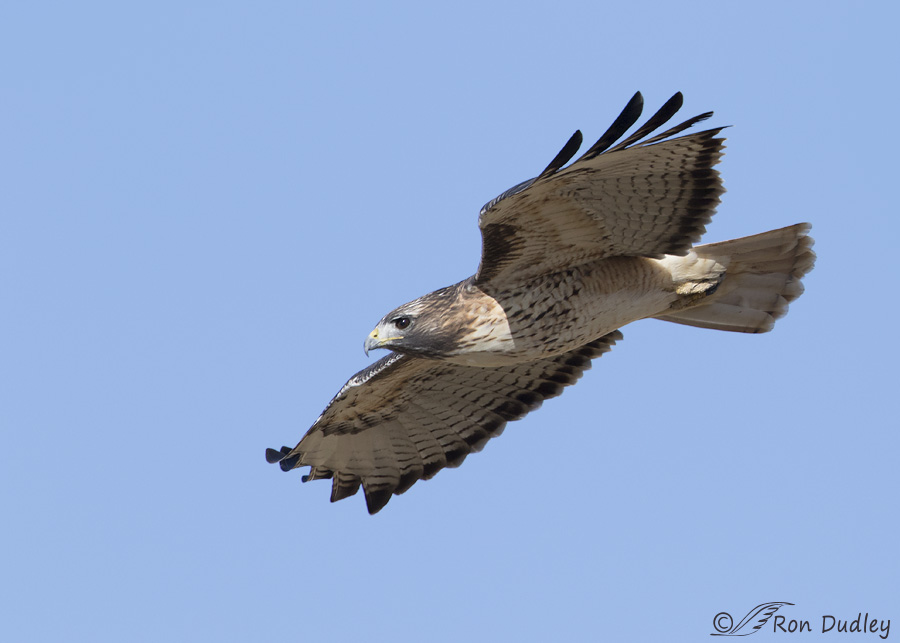
and this one I’ve left out ten photos mostly because the wire was in front of the bird (though I also cut off body parts in a few of those shots).
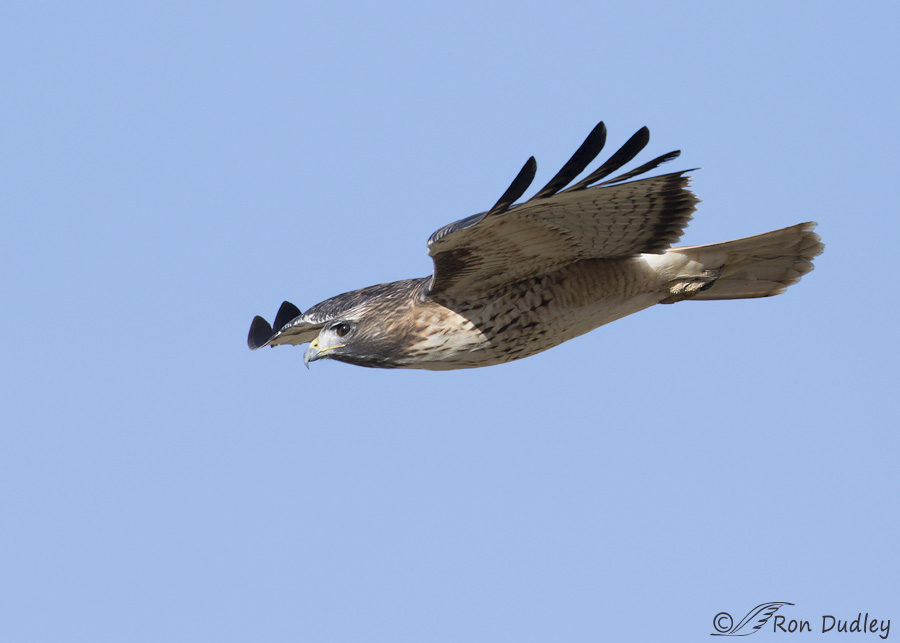
After the hawk cleared the lowest wire it was gliding downward with its wings in the same horizontal position so I’ve only included one of those photos because most of them looked almost exactly the same.
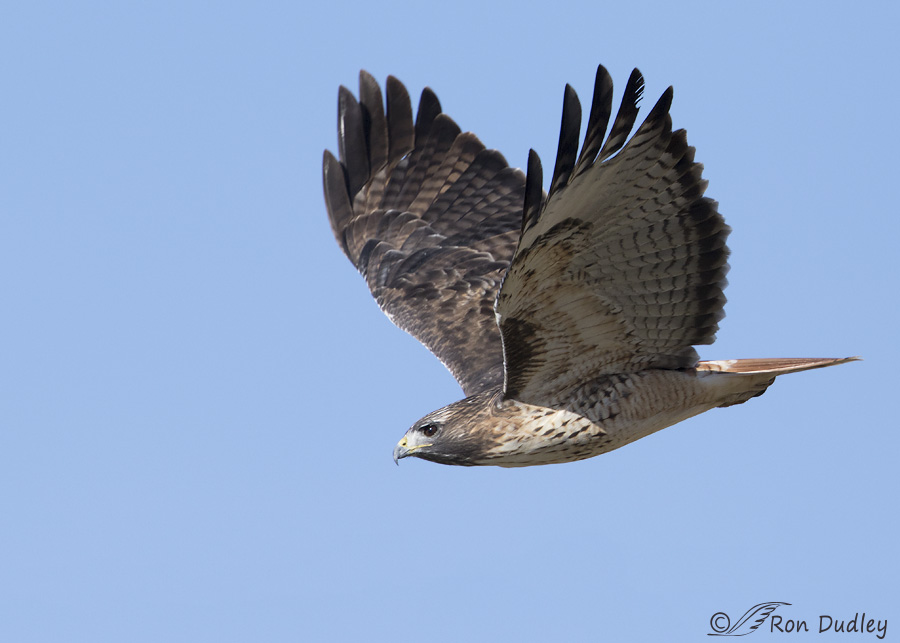
As it approached the bottom of its dive it raised its wings again but naturally I had very little room at the bottom and left of the frame so I’ve added canvas there for better composition.
A raptor on a pole can take off in many directions and most of them aren’t good ones for photography (butt shots, poor light angle etc). Since poles and wires generally run parallel to the road the photographer is (often) shooting from it’s usually best if the bird takes off in one of the two directions the wires are running but then you have to deal with those wires in your images. It’s a conundrum.
In my perfect world power companies would put up poles without wires but I don’t think I’ll hold my breath for that one…
Ron


Very nice Ron! You did an excellent job of keeping focus on this beautiful hawk.
Wow. Just. Wow. These shots take my breath away. I appreciate your walking us through this series so we know the info about this sequence. I must be one of the weird ones, because I actually like seeing the wires, clipped wings, etc. They make me appreciate the accommodations of the bird — and the skill of the photographer — all that much more!
Nice series. Probably after we’re all gone wi-fi will replace the wires. If you believe in reincarnation I wish you well as a photographer.
It may even happen before we’re gone, Linda…?
Oooh. And ahhh. Which is my equivalent of Laura’s series of WOWs.
Awe and wonder.
And I too am often amazed at just how dextrous/agile birds are.
As an aside, passing the cursor over the images doesn’t give me file numbers. It does zip in fact – which is fine. The images are what stirs my heart.
Thanks, EC. I have no idea why that cursor thing isn’t working for you…
Beautiful series. And beautiful britches on the bird. Even though the wires are a bit annoying, they aren’t a big deal for me except where they cross the wing.
Thank you, Susan.
I got excited when Just read the title of this blog…it’s such a wonderful, wonderful series! Have scrolled through many times…hard to pick favorites…am always amazed how they manuver between branches, wires,etc. great series!
Patty, I’ve seen raptors perform some pretty nifty maneuvers in flight to avoid wires and other obstructions. It’s something I’ve always wanted to photograph but doing so still eludes me.
I understand that you are a perfectionist and have angst with dealing with poles and wires.
But, for me as one of your readers, one who looks forward to your photographic expertise, and a cup of java, I love the fact that you make every effort to be transparent. We know and trust you explicitly on what you show, what you like and don’t like, it all makes a huge difference to me.
Yet, I have to admit, the poles especially and some shots with the wires don’t make a lot of difference to me, because you capture the bird in its natural habitat, and usually in all its glory.
Thanks for some great shots, wonderful catch light in the eye and sharp as a tack.
“love the fact that you make every effort to be transparent”
That part of your comment means a great deal to me, Dick. I see so much trickery, so many deceptive practices and outright dishonesty in photography that I try to be as forthcoming as possible about what I’ve done and what I haven’t done to my images.
Thanks very much!
Does this mean that if Mia was standing behind you, I could see her?
Not from New York, Patty – your eyesight isn’t that good!
Great series, Ron! Those wires do present problems tho it is interesting how the raptors and other birds navigate them. Glad you weren’t “skunked” for the day.
Those wires do present problems tho it is interesting how the raptors and other birds navigate them. Glad you weren’t “skunked” for the day. 
I’ve had enough of that damned skunk, Judy. I’ve become much too intimate with him lately…
Well,you certainly got some outstanding flight shots Ron! A testament to your great Skills! Thanks for sharing!
Charlotte
Thanks very much, Charlotte.